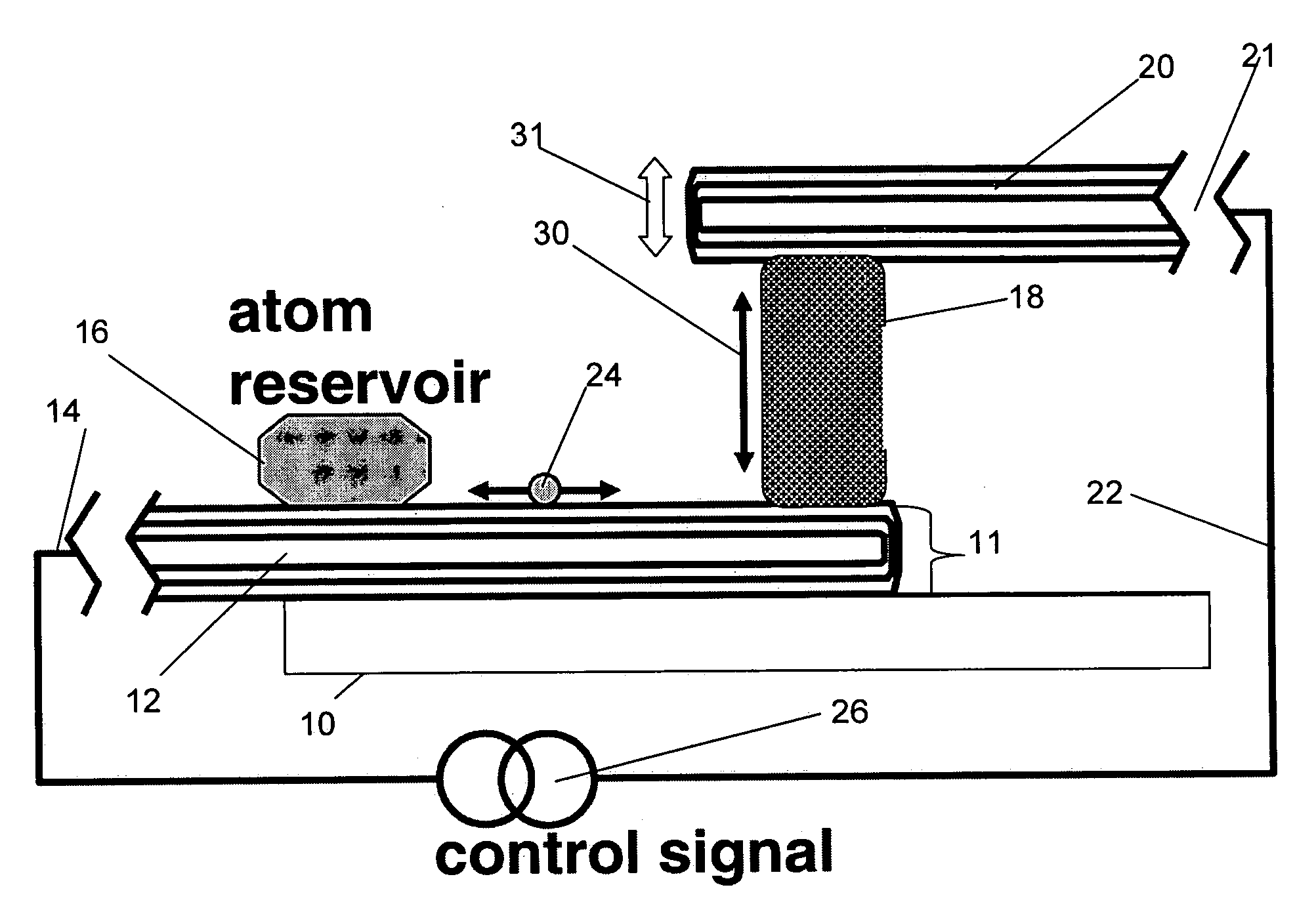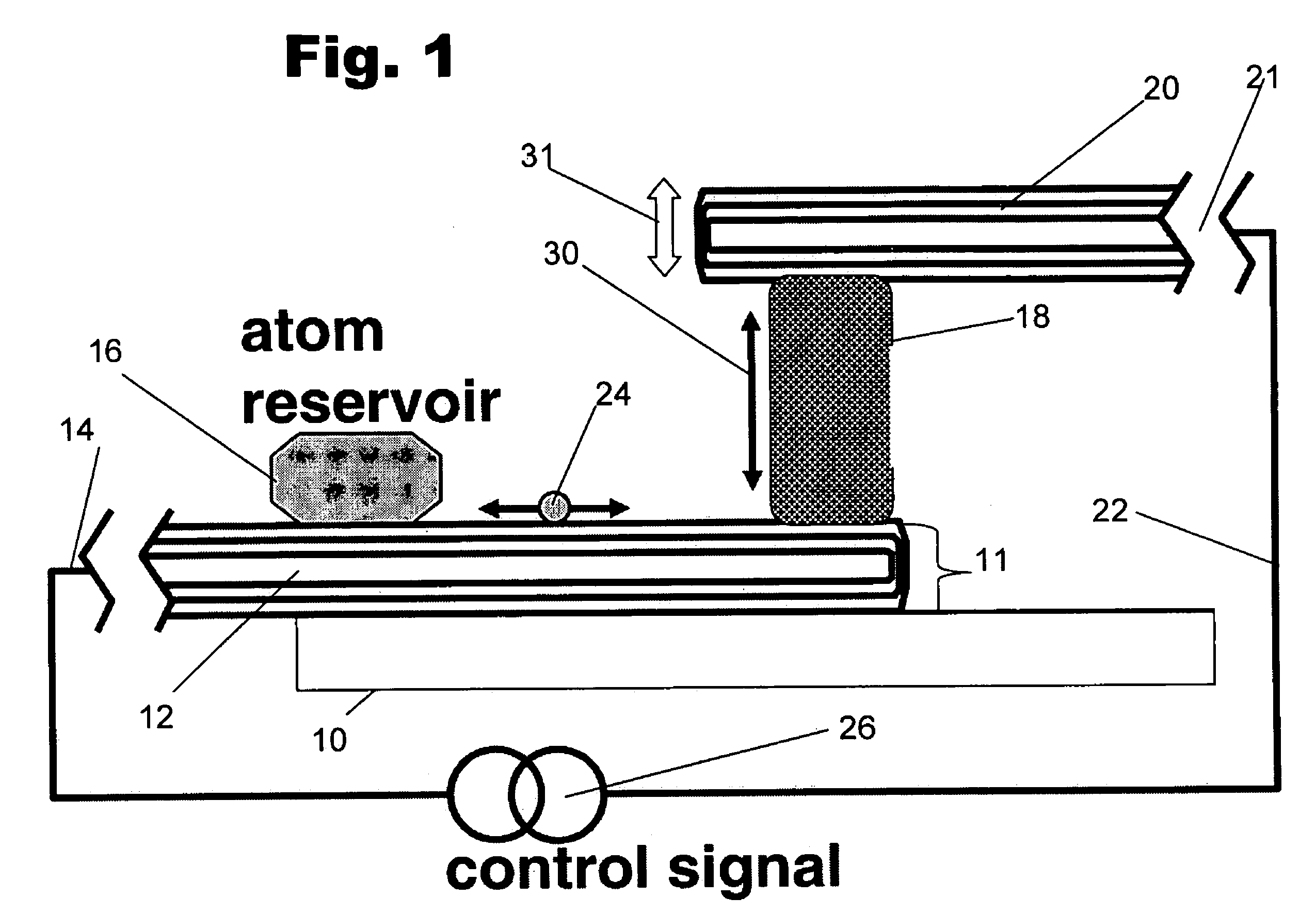Nanocrystal powered nanomotor
a nano-motor and nano-crystal technology, applied in the field of carbon nanotubes, can solve the problems of limiting the application potential of many proven macroscopic motor designs to nanometer length scales, affecting the performance of many motors, and achieving the effect of expanding flexibility
- Summary
- Abstract
- Description
- Claims
- Application Information
AI Technical Summary
Benefits of technology
Problems solved by technology
Method used
Image
Examples
Embodiment Construction
I. Generalized Method and Apparatus
[0032]The present nanocrystal powered nanomotor provides a nanoscale linear motor, powered by a single metal nanocrystal ram sandwiched between mechanical lever arms. Low-level electrical voltages applied to the lever arms grow or shrink the nanocrystal, virtually atom-by-atom, in a controlled manner. The length of the ram is adjustable from zero to more than 150 nm, with extension speeds exceeding 1900 nm / s. This synthetic linear motor may find application in inorganic nanoelectromechanical systems (NEMS) devices as well as in hybrid synthetic / bio-motors and related structures.
[0033]Described below is the successful construction and operation of a synthetic and apparently wear-free cyclical nanoscale linear motor, powered by a single solid-state metal nanocrystal ram. The ram length and extension / retraction rates are precisely controlled via low-level dc voltage signals applied to mechanical lever arms contacting the ram. The entire motor may be c...
PUM
 Login to View More
Login to View More Abstract
Description
Claims
Application Information
 Login to View More
Login to View More - R&D
- Intellectual Property
- Life Sciences
- Materials
- Tech Scout
- Unparalleled Data Quality
- Higher Quality Content
- 60% Fewer Hallucinations
Browse by: Latest US Patents, China's latest patents, Technical Efficacy Thesaurus, Application Domain, Technology Topic, Popular Technical Reports.
© 2025 PatSnap. All rights reserved.Legal|Privacy policy|Modern Slavery Act Transparency Statement|Sitemap|About US| Contact US: help@patsnap.com



